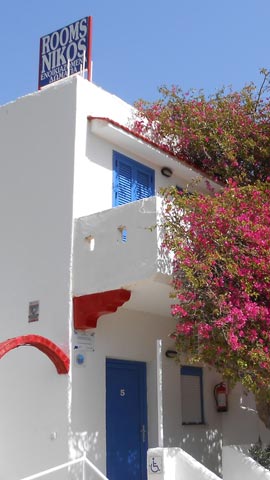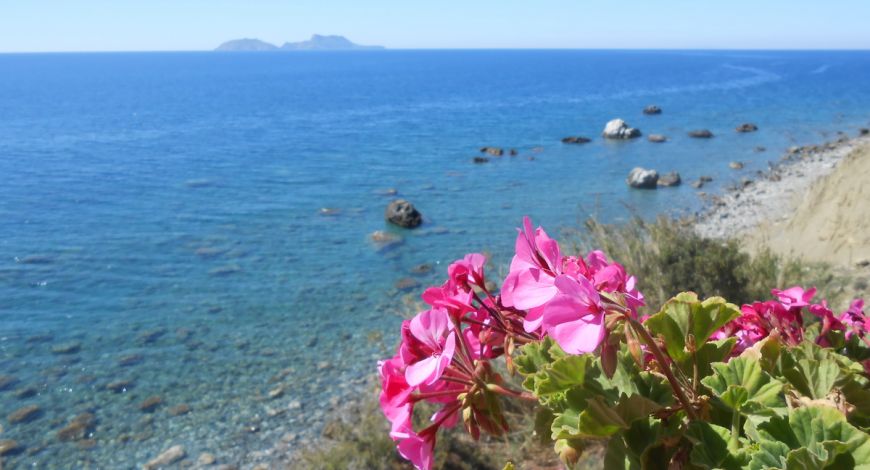-

Taverna & Rooms Nikos
Agios Georgios
A breathtaking view to the crystal clear waters of South Crete
-

An ideal place
for relaxing vacations!
Agios Georgios
On the south of Crete, just a little further from Agia Galini, there is the beach of Agios Georgios. It is a place away from the hustle and bustle of city life, with crystal clear blue waters and a pristine beach. The perfect spot for a relaxing vacation.
While getting to Agios Georgios, you will find many paths that will take you to small chapels or tiny, quiet pebble beaches.
An ideal place
for relaxing vacations!
ROOMS FOR RENT
Cozy rooms next to the beach.
TAVERN
Enjoy traditional flavors while gazing the sea.
FREE WI-FI
Free WI-FI is available in all hotel areas.
AIR-CONDITIONING
All rooms are equipped with air-conditioning.
Nikos Place
Sights
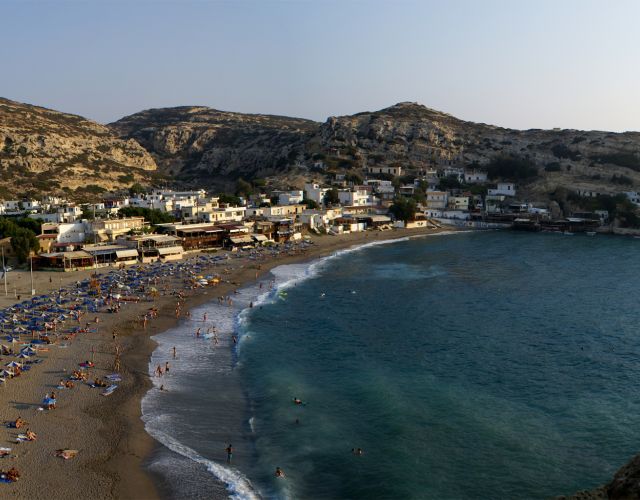
Matala beach
The beach of Matala has been occupied since ancient times. The settlers back then carved a set of caves in the soft rock of the mountain. During a period these same caves were inhabited by hippies who made them famous worldwide. The beach provides umbrellas and sunbeds. In the village there are tourist shops, restaurants, cafes and bars.

Sacred Monastery of Odigitria
Considered one of the oldest monasteries in Crete, this humble monastery still stands as a guard for Orthodoxy.
Apart from Agios Antonios, Agiofarango and Panagia in Martsalo, in the area of the monastery there are a series of chapels and hermitages.
The mill and the bakery at the monastery are operated as a museum.

Phaistos - Archaeological site
The Minoan palace of Phaistos was an economic, administrative and religious centre and supervised the fertile plain of Messara. The ancient ports of Matala and Kommos where under the control of Phaistos. Nowadays it is an important archeological site.

Kokkinos Pyrgos beach
The small port of Kokkinos Pyrgos separates its two beaches. On the west side there is a rocky and pebble beach that stretches to Agia Galini and on the east side a beach that reaches Kommos.
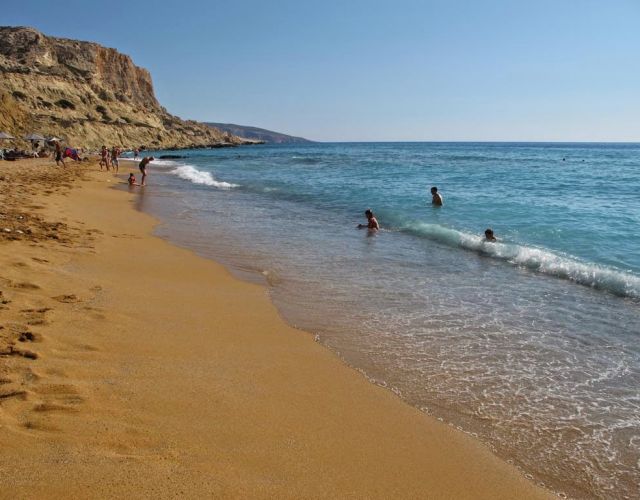
Red Sand beach
This beach (Red Sand) aka Kokkini Ammos is a secluded beach which can be reached only by foot – with the reddish sand that bestows on it its name, and turquoise waters.
It is open to the strong south winds, and not very organized – just a few umbrellas and sunbeds, as well as a small café-canteen, built roughly out of stone. It is sensible, if you visit, to take all you need with you as the canteen is not always open, and there are no tavernas or shops nearby.
Kokkini Ammos and surrounding area has been included in the EC ecological network of Natura 2000: a protected refuge of the Mediterranean Monk seal, the loggerhead turtles (Kareta kareta) and other animals.
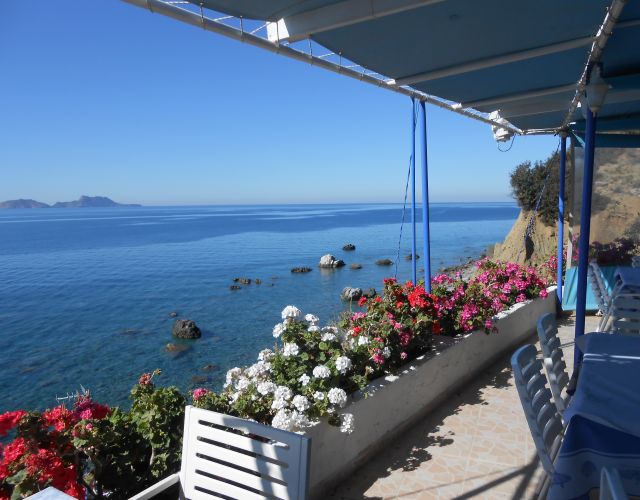
Tavern
Since 1977, the guests in our tavern enjoy traditional Cretan dishes and the breathtaking view to the Libyan Sea.
If you would like to taste fresh fish, live lobster and tasty local Cretan dishes, while feeling that you are on board a cruise ship, the only thing you have to do is to visit us.
Our tavern is in full compliance with the strictest food safety standards HACCP and ISO.


